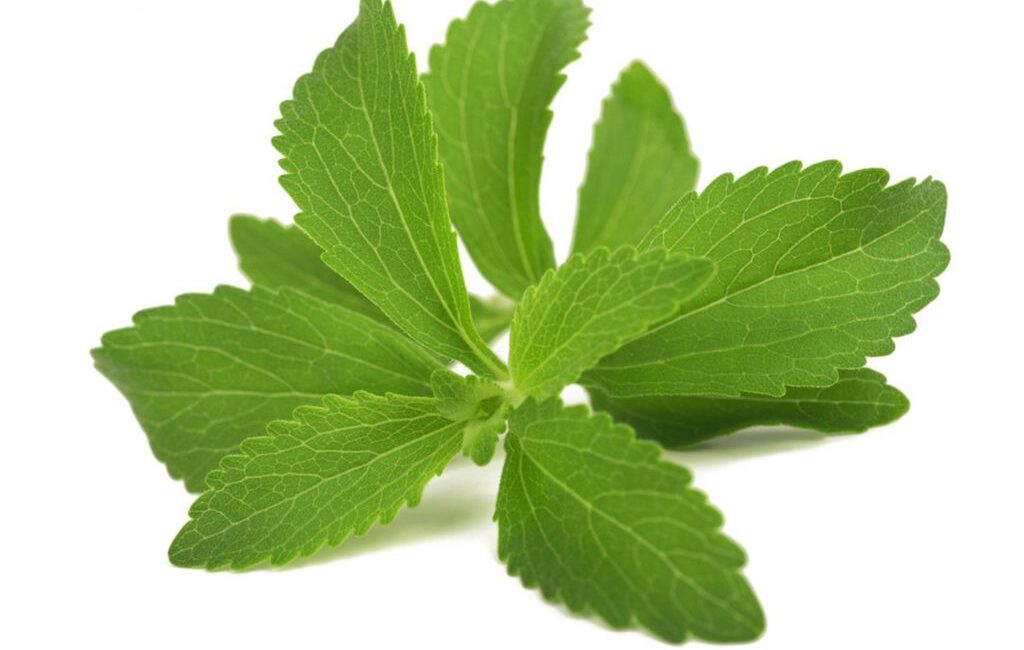What is the sweetest sweetener?
The stevia plant (Stevia Rebaudiana bertoni) is a leafy, green plant, indigenous to South America and originates from the sunflower family (Asteraceae).
It was originally used as a natural sweetener by indigenous populations in Paraguay and Brazil.
Stevia is a no calorie sweetener which is associated with several health benefits.
Where does Stevia’s sweet taste come from?
The sweet component within stevia leaves comes from a group of compounds called steviol glycosides.
Steviol are naturally found in the stevia plant.
Some commonly used steviol glycosides are rebaudioside A (also known as Red A or Rebiana), rebaudioside D (also known as Red D) and stevioside.
To date, more than 40 different steviol glycosides have been identified in the stevia plant.
Each of these steviol glycosides has its own unique taste profile and sweetness intensity.
This can be up to 350 times sweeter than sugar, but all share a similar molecular structure where different sugar moieties are attached to aglycone steviol (an ent-kaurene-type diterpene).
Purified stevia leaf extracts can taste different depending on which steviol glycoside is present and manufactures are actively researching the best tasting varieties.
What are the Health Benefits of the sweetest sweetener?
A lot of research shows that using the whole leaf of stevia, can have great health benefits.
The benefits of stevia are numerous:
- 350 times sweeter than sugar
- natural origin
- sustainability
- zero calories
- zero glycemic load
- anticancer ability
- regulate glucose levels
Anticancer Abilities
In 2012, Nutrition and Cancer highlighted a ground breaking laboratory study that, for the first time ever, connected stevia consumption to breast cancer reduction.
It was observed that stevioside enhances cancer apoptosis (cell death) and decreases certain stress pathways in the body that contribute to cancer growth.
Regulate Glucose levels
An article published in Journal of Dietary Supplements evaluated how it affects diabetic rats.
It was discovered that rats treated with 250 and 500 milligrams every day “significantly”:
- reduced fasting blood sugar levels
- balanced insulin resistance, triglycerides and alkaline phosphatase (which can be raised in cancer patients)
Stevia is used as a sugar substitute, especially in diabetics, because its sweet component stevioside is not broken down or absorbed in the body.
Stevia as a glucose stabilizer also promotes healthy pancreas function.
Stevioside can increase the insulin sensitivity which can helps with the blood sugar regulation.
Supports weight loss
Stevia is a calorie- free sweetenerand can be used as a substitute of sugar.
Stevia helps in reducing the amount of energy consumed without sacrificing sweetness.
Research has shown that there is no accumulation of stevia (or any by-product of stevia) in the body during metabolism.
Improves cholesterol levels
A study (2009) showed that stevia extract had positive and encouraging effects on overall cholesterol profiles.
Researchers found that there were no adverse stevia side effects on the health status of the subjects involved in the study.
Researchers concluded that the extract effectively:
- decreased elevated serum cholesterol levels
- including triglycerides and LDL (“bad cholesterol”)
- increasing good HDL cholesterol
Lower blood pressure – Hypertension is the most common heart disease and affects many people around the world.
In particular, stevia can help to reduce low blood pressure in people suffering from hypertension.
As a result, you can add a cup of stevia tea to your daily routine in order to maintain a healthy blood pressure level and reduce the risk of cardiovascular disease.
Relieves digestive problems
Plant glycosides have a soothing effect on the irritated gastric mucosa, making it an active ingredient for treating digestive problems and heartburn.
How it is absorbed through the body
Steviol glycosides are not absorbed intact.
Once consumed, they pass through the upper gastrointestinal tract, including the stomach and small intestines, fully intact.
Although, once steviol glycosides reach the large intestine, colonic bacteria remove all of the glucose units, leaving only the backbone, steviol.
In humans, steviol is absorbed into the body, quickly modified in the liver, and excreted in the urine as steviol glucuronide.
How to use Stevia?
The best quality stevia will have no additives, including other sweeteners and does not contain any colourings and is a non- GMO certified.
Not to mention, the sweetest sweetener it is available in both powders and liquid forms, but they have found that the liquid form is much cleaner, without additional additives and excipients.
Additionally, it is also easy to add to beverages and smoothies, as well as using it in cooking.
Moreover what is the analogy in terms of the dosage:
- 1 teaspoon sugar = 5 drops of stevia liquid
- 1 tablespoon sugar = 15 drops of stevia liquid
- A cup of sugar = 2 teaspoon of stevia liquid
You can read also about Detoxification: The secret of 21st century



